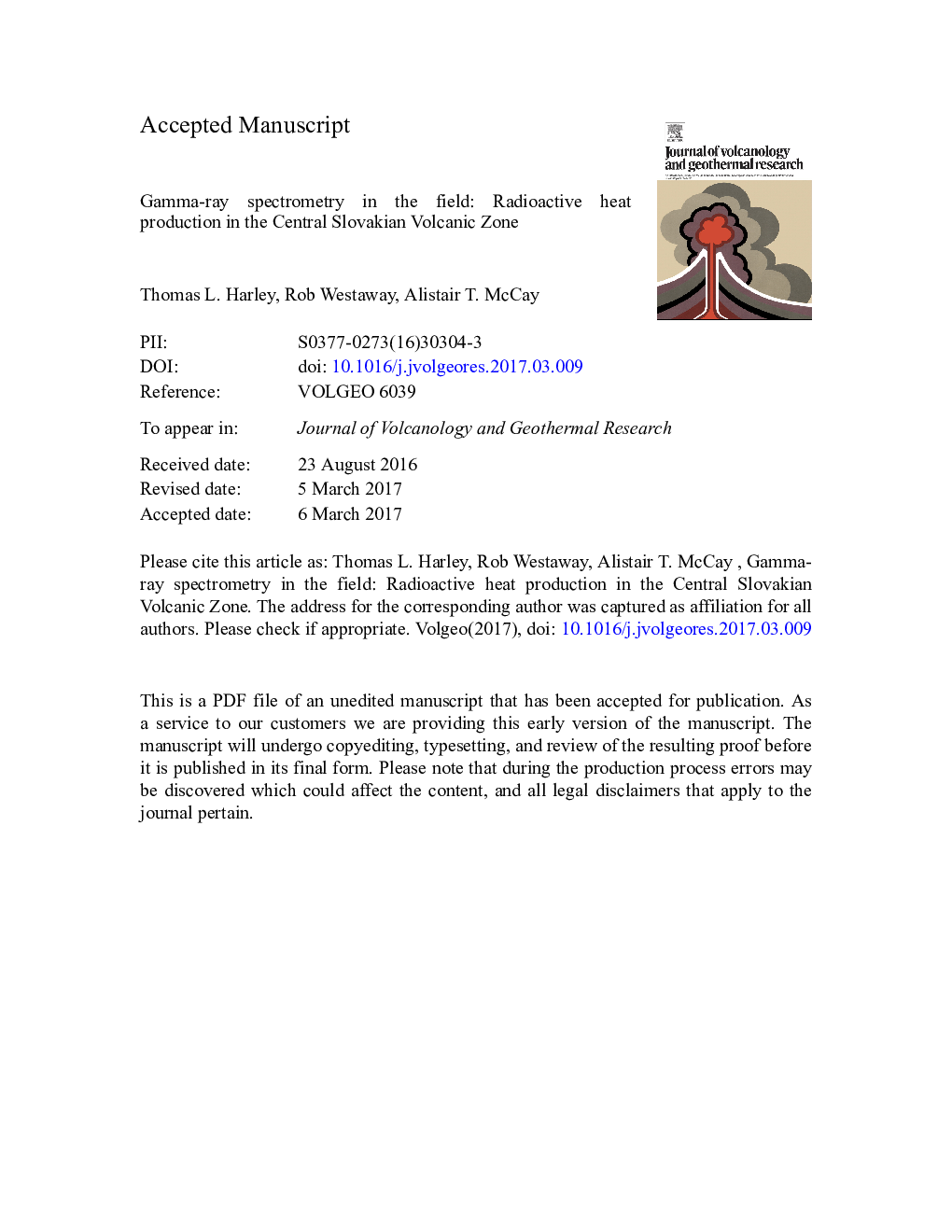| کد مقاله | کد نشریه | سال انتشار | مقاله انگلیسی | نسخه تمام متن |
|---|---|---|---|---|
| 5783746 | 1638285 | 2017 | 94 صفحه PDF | دانلود رایگان |
عنوان انگلیسی مقاله ISI
Gamma-ray spectrometry in the field: Radioactive heat production in the Central Slovakian Volcanic Zone
ترجمه فارسی عنوان
طیف سنج گاما در این زمینه: تولید حرارت رادیواکتیو در منطقه آتشفشانی اسلواکی مرکزی
دانلود مقاله + سفارش ترجمه
دانلود مقاله ISI انگلیسی
رایگان برای ایرانیان
کلمات کلیدی
موضوعات مرتبط
مهندسی و علوم پایه
علوم زمین و سیارات
ژئوشیمی و پترولوژی
چکیده انگلیسی
We report 62 sets of measurements from central-southern Slovakia, obtained using a modern portable gamma-ray spectrometer, which reveal the radioactive heat production in intrusive and extrusive igneous rocks of the Late Cenozoic Central Slovakian Volcanic Zone. Sites in granodiorite of the Å tiavnica pluton are thus shown to have heat production in the range ~ 2.2-4.9 μW mâ 3, this variability being primarily a reflection of variations in content of the trace element uranium. Sites in dioritic parts of this pluton have a lower, but overlapping, range of values, ~ 2.1-4.4 μW mâ 3. Sites that have been interpreted in adjoining minor dioritic intrusions of similar age have heat production in the range ~ 1.4-3.3 μW mâ 3. The main Å tiavnica pluton has zoned composition, with potassium and uranium content and radioactive heat production typically increasing inward from its margins, reflecting variations observed in other granodioritic plutons elsewhere. It is indeed possible that the adjoining dioritic rocks, hitherto assigned to other minor intrusions of similar age, located around the periphery of the Å tiavnica pluton, in reality provide further evidence for zonation of the same pluton. The vicinity of this pluton is associated with surface heat flow ~ 40 mW mâ 2 above the regional background. On the basis of our heat production measurements, we thus infer that the pluton has a substantial vertical extent, our preferred estimate for the scale depth for its downward decrease in radioactive heat production being ~ 8 km. Nonetheless, this pluton lacks any significant negative Bouguer gravity anomaly. We attribute this to the effect of the surrounding volcanic caldera, filled with relatively low-density lavas, 'masking' the pluton's own gravity anomaly. We envisage that emplacement occurred when the pluton was much hotter, and thus of lower density, than at present, its continued uplift, evident from the local geomorphology, being the isostatic consequence of localized erosion. The heat production in this intrusion evidently plays a significant role, hitherto unrecognized, in the regional geothermics.
ناشر
Database: Elsevier - ScienceDirect (ساینس دایرکت)
Journal: Journal of Volcanology and Geothermal Research - Volume 338, 15 May 2017, Pages 1-24
Journal: Journal of Volcanology and Geothermal Research - Volume 338, 15 May 2017, Pages 1-24
نویسندگان
Thomas L. Harley, Rob Westaway, Alistair T. McCay,
